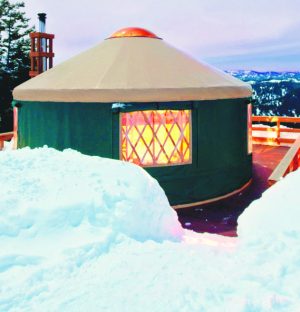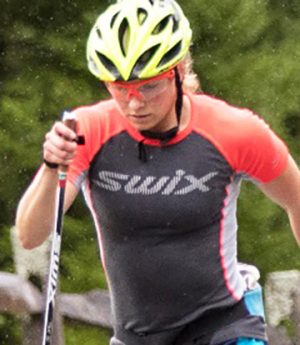July 13, 2010 – What does it take to be an internationally successful skier? Usually you will get an answer that includes things like hard work, dedication, many years of training and lots of talent. Those are all likely part of the puzzle but they aren’t very tangible, they don’t really tell you as a coach or as an athlete what is truly necessary. When the LTAD model was first developed one of the key goals was to describe how an athlete goes from ‘Playground to Podium’ ie. what is the path that they should take on that journey? Both the generic and skiing specific LTAD documents do a good job of laying out the fundamentals of that path and between all the materials available, most of the answers are presented. What we are hoping to do over the next series of articles is to consolidate some of the most relevant information for coaches working with developing skiers at the Learning to Train (L2T)through the Learning to Compete (L2C) stages.
In this first article, we are going to tackle one of the key elements for technical endurance sport like skiing: how much training is appropriate for junior skiers. Recently the various health authorities in Canada and other countries have updated recommendations for the general public in terms of daily activity levels. They are now recommending that all adults get a minimum of 90min a day of exercise to remain healthy. Over a year that means a normal adult should be doing around 450+ hours of ‘exercise’. The recent increase in those recommendations is mostly a response to the decrease in our activity levels related to daily living. Most adults and children drive to work/school and sit all day only to drive home and sit at the computer or TV all evening.
The reason we mention these broader social health issues is to gain some perspective on what every person should be doing as part of active daily living so when you start to design a plan for your athletes you keep that in mind. If you have a 13yr old skier and set them up with a 300hr per year plan and that is all they do for exercise (which would be quite unlikely), they are actually getting less than what is recommended for the non-athletic population. Now, if that same athlete is doing 300hrs of ‘training’ plus they are biking to school every day and playing soccer during/after school as well as the occasional hiking or canoeing trip, that athlete will start to really develop a good base of endurance capacity. Thus, you can see the importance of appreciating the overall level of physical activity of your athletes when designing a training plan and determining training volume.Success as a senior athlete at the Olympic and World Cup level requires many years of training; some suggest 10yrs or 10,000hrs of focused training as a guideline. The primary reason for this is the cumulative effect that training has on our physiology. With consistent, progressive training, the body will constantly adapt to become more efficient as well as having a greater capacity for work. There really are no shortcuts to being a successful endurance athlete and while some athletes reach their peak younger than others do, it is often related to how early they started ‘training’. I put ‘training’ in quotes because as I described in the previous paragraph, training at a young age (ex. L2T) doesn’t all need to be centered around focused workouts directly related to skiing. Some athletes obviously progress to the top of the international podium at a relatively young age, but look over some of the information about their training and you will find that as a junior they were training 600-700+ hrs a year.
One misinterpretation that the LTAD material can lead to is the idea that athletes’ peak in endurance sports like skiing in their mid to late 20’s and as a result, you have plenty of time to develop as a skier. While it is true that an athlete might not reach their full potential until their mid or late 20’s, that doesn’t mean you can wait until you are in your 20’s to start training properly and show a serious commitment. Long term athlete development” in fact refers to a step by step process of “building” an athlete over many stages (and many years), starting by solid foundations and using each development stage as a building block for the next one. As such, the development and performance benchmarks for the older juniors at the end of the L2C stage are already quite high if an athlete is to reach international HP goals by his/her mid 20’s. Check out the article about Canada’s World Junior Championships Performance Analysis to see more info related to the importance of junior performance benchmarks.
Starting to discuss overall ‘training’ load with 12-13yr old skiers is a good starting point assuming they have been active throughout their lives; ideally, kids would grow up in an environment that prioritized active daily living from a very young age in order to develop the numerous fundamental abilities. If a child reaches 12yrs old with a very sedentary history, they are likely to be behind the more active kids and will need to quickly transition to an active lifestyle. For this discussion, we will start at the beginning of the T2T stage since that is an age that we as coaches can have a substantial impact on, and when more formal training begins with your programs. Because athletes need progressive, consistent training over many years it is important that they start on a path that will allow the training increases to be progressive and not random or excessive. It is important to remember one of the key elements of LTAD, age and stage of development are not always the same. A 15 yr old skier that is just starting out in sport may be similar in many aspects to a 12 yr old skier that progressed through CCC’s skills development programs. Always keep in mind what stage an athlete is at, not just the chronological age.
What counts as an hour of training? In order to have a common understanding of training volume it is important to consider what is counted as training. Every coach and athlete will have a slightly different way of counting hours, but as long as the key fundamental concepts are the same, the overall training volume should be relatable between different programs. What makes up an hour of training comes down to the question of training quality and a huge number of factors are involved in that discussion (subject of a future article.) As a general rule high quality training is any training that is specifically planned into an athlete’s program with a purpose and desired outcome. An hour of biking may be considered low quality if you are in the pre-competitive period but it might be a very beneficial recovery workout during the general preparation phase.
Some general guidelines for workouts and recording training volume are listed below:
• Workouts should be a minimum of 30mins of continuous activity (i.e. 20min ride to school or a 30min gym class with limited activity doesn’t count)
• Workouts should be at a minimum of zone I intensity (above 60% of max HR, i.e. a slow walk with parents or a dog doesn’t count as training)
• In general, non-weight bearing activities (biking, swimming) don’t require as much effort for a given length of time. Training time is still counted as full time (i.e. 1hr biking is recorded as 1hr of training), however coaches should keep in mind the physiological cost and fatigue caused by these activities is often lower compared to running or skiing. This is not always the case, mountain biking on hilly technical terrain can be very similar to running in terms of physiological cost.
• During workouts athletes should count the time they are actively training, long drink breaks or equipment changes should not be included in training volume (going downhill is part of training and racing and should be counted as part of the overall workout)
The following suggestions are a general range for the different components of an annual training program in terms of overall volume.
– Zone 1 training makes up 75-80% of the total yearly training volume
– Zone 3-4/racing make up 5-10% and strength training is 10-15%(recovery between intervals or sets are included in training time)
– Specific training (skiing, roller skiing, specific strength) will be roughly 50% for a T2T athlete and closer to 60% or 70% as the athletes progress to the L2G and T2G stages (see GGG’s LTAD guide for sample Yearly Training Plans)
It is important to remember that hours are only one part of the equation; you always need to consider intensity or the quality of training and all the other factors that go into being a successful athlete (nutrition, recovery, etc). We will use hours as a starting point since it is the most fundamental way of measuring training.
How many hours should a junior skier train? The following chart showing training progression is based on the volume, or total number of hours spent training in a season (typically May to April). The chart shows the ideal progression of training volume assuming the athlete has developed all of the skills and abilities of the previous stages of development leading up to the T2T stage. As pointed out earlier, keep in mind that this ideal training volume progression represents the average recommendations but individual training volumes may vary by ± 5%depending on what makes up those hours.
The chart doesn’t specifically distinguish between the range for male and female athletes. The reason for this is that there is no good evidence to support the idea that men and women cannot handle similar training loads. On the World Cup there are examples of successful women who train more than any of the men and also those who train significantly less than the men. The more important consideration is how individuals respond to training volume and their specific training background and stage of development. As pointed out in the World Juniors Performance Analysis article, junior women are typically 1-2 years ahead of the junior men from a physical maturity perspective. The international results show that junior women are closer to the senior level than their male counterparts since they typically mature earlier and can begin more intense training at an earlier age. All of this information points to the fact that male and female skiers should be considered individually based on all the available information to determine the appropriate training volume and overall training plan.
Next steps? Over the next months, we will continue to expand this discussion to other aspects of high performance training for junior skiers. As previously mentioned, training volume is only one aspect of a successful training program needed to reach the highest levels of performance. The next discussion will focus on the question of ‘What makes up those training hours?’






![National camp action [P]...](https://skitrax.com/wp-content/uploads/2019/08/Duluth-4-2019-08-08-at-10.46.51-AM-300x246.png)
![Matt Liebsch on the CXC Elite Team [P] CXC...](https://skitrax.com/wp-content/uploads/2019/08/Matt-Liebsch-CXC.2-525x700.4-300x267.jpg)
![Dan LaBlanc [P]...](https://skitrax.com/wp-content/uploads/2019/08/Dan-LaBlanc-img_1855.3.jpg)

![Junior Training Progression Chart [P] Cross Country Canada](http://skitrax.com/wp-content/uploads/2010/07/Junior-Training-Progression-Chart.21.jpg)
July 13th, 2010 at 12:23 pm
Would not make the article more serious to publish an author and all recourses? Thank you.
Petr Jakl
July 13th, 2010 at 6:50 pm
Please open this link and read:
http://skitrax.com/11926
Complements to CCC for finally coming forward with information regarding the ever so important training hours progression necessary to become a successful international skier at all levels. When the LTAD booklet came forth a few years ago I read it thoroughly and found a few holes that I brought to Georgia Manhard’s and Stephen Barrette’s attention. I was essentially stonewalled by the both of them.
Now I do have some feedback concerning the above article, and hopefully–a discussion will ensue with other members of the Canadian coaching fraternity. As I think the LTAD when put together missed the chance or sidestepped much of the international coaching expertise, acumen and experiences in Canada that ex-coaches like Jack Sasseville, Laurent Roux, Lyle Wilson, Bjorger Petterson, Toni Scheier and others would have offered to making a better and more complete LTAD.
My first point is the lack of references to the importance of the coach/skier relationship in bringing about the best possible outcome for the skier in developing their training program. Especially in the beginning, when the coach will be able to make recommendations that will fit the skiers needs at that time. I think that the coaching relationship has to be very repetitive in it’s re-enforcement. Skier focused—coach driven, as the old saying goes.
My next point has to do with the paragraph with the comments concerning male and female development, as I find the the paragraph contradictory from the starting comments to the finishing comments. Saying that there is “no good evidence to support the idea that men and women cannot handle similar training loads” and then the last sentence saying, ” All of the information points to the fact that male and female skiers should be considered individually …” What gives here?? This tells me there is a need for individual charts.
This brings up more discussion on why male and female skiers do need to be considered individually. Men and women should never be compared as skiers or athletes, even if you want to get into the maturation process and insinuate that with the women being more mature then their like aged men in the middle teens, this is way to general a statement, and definitely does not lead to those training adjustments. Your final statement in that paragraph helps to clean this up. Women and men are different and there are all kinds of considerations that differentiate them. I was on the WC Committee that modernized the racing distances and course criteria and we were very cognizant of the fact of selecting all these numbers, so they (men and women) couldn’t be compared. We took into account some of these differences; women have smaller hearts and lungs, less muscle mass, carry more fat and the angulation of the femurs coming out of the pelvis will not let them run or ski as fast as men. Again, another reason for a separate training hours chart for both sexes.
I think the “30 minutes of continuous activity” does not constitute a work out! This number should be open to discussion—I feel it has to be a at least 60 minutes–15 mins for warm-up, 30 mins of training and 15 mins for warm down. The 30 minute concept leads the skier to bad workout habits for starters.
A couple of other comments—these charts and there numbers are very critical to the future success of xc racing in this country. There have been too many coaches and skiers who have not had a clue, over the past 20 years as to what a training year constitutes and will now put us into what the internationals have known for years. In my mind, this is the one step in the equation we can take to give more younger skiers the right start to let them realize their full potential. Not getting to the end and finding out that they were hooped right from the beginning because they were behind dramatically in hours.
I think we have proven for a long time that we know how to train, its just that we weren’t doing enough of it right from the start of each skiers career.
Next thought for discussion—15 years of age in my estimation is the throw down year—you have to be into a program, you have to have a educated/certified coach helping you with that program, and be real close to saying this is my sport and my life. Make this decision when you are 17 or 18 years and you are behind in training development by 900 to a 2000 hrs, already!!!—hours that you will never make up. Any compromise, and I mean any, and you have lost the way to finding out who you could have been.
The world’s top skier right now, Petter Northug, was at 750 hours his last year as a junior and as a 24 year old will do over 900 hrs this year. If you want to beat the best—a good start is to be on an even training hour base with him.
Too many Canadians and Americans over the years haven’t had this information when they needed it–in the beginning!! We lost a lot of good skier for that reason.
Looking forward to the next essay.
July 26th, 2010 at 1:08 pm
In response to Petr – the author, I think, is James Cunningham writing for CCC. The confusion is that he writes “I” instead of “we” so we are to assume that they are his personal opinions not those of CCC. If they are his opinions then he should sign his name. If not, he should change all the I’s to we’s.
I qagree with the point that Marty is trying to make that if this really is an LTAD to show us “what it takes to be an international skier” then the numbers in the graph are way to low. Having a 15 year old doing only 400 hours and a 19 year old doing only 600 is not what top international skiers are doing. You don’t have to use Petter Northug as an example – take a look at Alex Harvey. He was doing way more hours than 600 in his last year as a junior.
The question is this: are we creating a path to follow that will lead to top international results or not? This graph may work for “ordinary” skiers but one of the qualities that a top international skier must have is that they can handle high levels of training volume and load. There was a great article lately in the Globe and Mail about Ryder Hesjedahl who just finished 7th at the Tour de France. In it they talked about his ability to train with high loads and not get sick or hurt.
Are we worried about burning kids out as juniors? For sure, higher loads will have a higher attrition rate, but this is going to happen anyways. As one international coach said to me years ago when I asked him why his skiers were training so much as juniors “we might as well find out now if they can handle the load rather than 5 years from now. It will save us a lot of time and money.”
I am not suggesting a huge increase in hours, but I know that even in the 1980’s the Finns were recommending 500 hrs for a 15 yr old and 700 hrs for a 19 yr old – regardless of gender. This seemed to be a common number with many other nations at the time. There is no reason that I know of that a female cannot handle the same training load at these ages. The only reason for them to do less volume is that they are doing more intensity because their race distances are shorter. This difference of 100 hours a year from 15 to 19 years is 500 hours in total over the 5 years. That is a lot to give up to another skier and it will take years before things even out, if they ever do.
The LTAD is a step forward – the question is whether we want to show our skiers the middle, safe path or the higher path that may be too hard for some. I believe that the majority of international athletes are training more than this and that we need to do more. If our skiers are behind in training load when they become seniors it will be very hard for them to catch up. We do not have the $ for support or the social values to support very many U23 athletes that are behind in training and results. Most will leave the sport for school or other things way before they catch up.
Of course, volume is only one aspect of training. I know that James will address the other important areas in future articles. We all fall into the trap of equating hours to performance. If this were the case then we should just mail in the hours that our skiers do and the one who does the most will win. It is not just how much you do, but how and when and what you do are just as important. And that is just the physiology of training loads, it doesn’t deal with the psychological, technical or tactical demands of the sport.
September 27th, 2010 at 12:59 pm
We have had the pleasure of working with the creators (and copyright owners) of LTAD http://www.canadiansportforlife.ca for the past two years in the production of a DVD version of their excellent written material.
NSO’s have adopted the concepts of LTAD and are in verious degrees of progress in distributing sport specific material. Many NSOs collaborated on the project. CCC opted to develop material unilaterally. We have similar experiences as Petr and Marty.
So when CCC distributed their LTAD materials a few years later (in paper form only), we were interested in providing it to our club coaches. However, the CCC LTAD material as it stands now, is verbatum what Canadian Sport for Life published years earlier, with a few picture changes. It is rebranded with skiing logos, but contains no ski specific material or unique thought. The content is valid but is far less sports specific than other NSOs like Biathlon, Wrestling, Swimming etc.
Maybe there is something available from CCC, but our club has never received it and nothing as forecoming when we requested it.